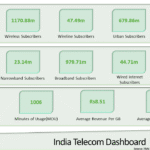The initiative of making 5G smartphones available at the entry level has already begun in India. This is a very important enablement as it helps customers across price spectrum use the latest generation of cellular technology. Though we might still be challenged with promising use cases for consumers, one of the requisites for use cases to develop is also the penetration level of technology, in this case 5G smartphones.
Evolving affordable 5G smartphone
Making 5G smartphones affordable isn’t new. However, it got further impetus after Qualcomm introduced its 4s Gen 2 platform in July 2024. Prior to this the only option available with the OEMs was from MediaTek. With the Snapdragon addition, we started more OEMs getting interested about the segment. Though this is not the reason, but it somewhere aligned with the thought process of OEMs wanting to foray affordable 5G smartphones. It is very common to see when OEMs get more choice of component partners, they feel comfortable to get into a segment as it hedges their risk of relying on a single supplier.
After MediaTek and Qualcomm, we have seen UniSOC also foraying in 5G. However, UniSOC has not been a mainline chipset supplier for many years now, especially after 4G. The game has been primarily between Qualcomm and MediaTek, besides some OEMs using their own chipsets.
Farewell to 4G smartphones
As we move closer to 2025, affordable 5G smartphones is going to be a very active space in the market. Just yesterday, Poco announced C75 powering Snapdragon 4s Gen 2 at ₹7,999 introductory price. We are yet to enter in 2025, and the price of a 5G smartphone has already gone below ₹8,000 mark. This means even 10-15% of the 4G shipments might not happen in coming months. By 2Q’2025, its unlikely to see 4G smartphones being shipped going by this pace. Finally, we may bid farewell to 4G smartphones after a decade long limelight!

Benchmarking the choice of chipset
Now let’s look at the options OEMs have, and which chipset addresses the user requirements and why. We ran our chipset performance and efficiency benchmarking covering 32 parameters of an SoC. These cover elements of CPU, GPU, Memory, Network & Connectivity, Display, Camera and Video Support. The benchmarking is basis the maximum output or the minimum resources consumed by each of these parameters defining the capabilities and limitations of a chipset.
In our comparison of MediaTek Dimensity 6100+ and Qualcomm Snapdragon 4s Gen 2 chipset, the overall score achieved by these chipsets was 833 and 793 respectively, out of a maximum of 1000 points. This indicates that at an overall level, MediaTek’s Dimensity 6100+ is a better performing chipset compared to Qualcomm’s Snapdragon 4s Gen 2 platform. Let’s dive into some of the specific comparisons highlighting the capabilities and limitations of both.
CPU – In case of CPU both of 8 cores, 2 out of which are performance cores. The Dimensity 6100+ has a clock speed reaching 2.4GHz which is 20% higher than what Snapdragon 4s Gen 2 can achieve. However, Snapdragon 4s Gen 2 is based on 4nm process node offering higher power efficiency compared to its MediaTek counterpart, which is based on 6nm process. Overall, the CPU of MediaTek 6100+ offers more power.
GPU – In case of GPU both are at par. Both have frequency of 950 MHz and support maximum of 1 display, which is more than adequate considering the lower tier of the devices that will be powered by these.
Memory – Both the SoCs again have the same RAM type LPDDR4X with RAM frequency of 2133 MHz. However, Dimensity 6100+ can support 16GB of RAM against 4s Gen 2 that can support 8GB only. So Dimensity 6100+ performs better here.
Storage – The storage type in Snapdragon 4s Gen 2 is UFS 3.1 while Dimensity 6100+ storage is based on UFS 2.2. This obviously makes the data access faster on Snapdragon. It also has higher L2 and L3 cache allowing more local access to frequently used data and instructions. While Snapdragon 4s Gen 2 does better in terms of the storage access, MediaTek’s 6100+ can support 1TB of storage while SD 4s Gen 2 only supports 256 GB of storage.
Power & Thermal performance – The TDP or Thermal Design Power of SD 4s Gen 2 is 4w compared to 7w for Dimensity 6100+. While this does give 6100+ an edge in performance it also means that the power consumption and heat dissipation of the chipset is higher than the Snapdragon counterpart. So, it would require a better cooling mechanism.
Network & Connectivity – From cellular connectivity perspective, 6100+ supports both NSA and SA 5G architectures making it work with all the 5G operator networks in India. 4s Gen 2 will only work with SA networks. Both support Wi-Fi 5; however, 6100+ has Bluetooth 5.2 against 4s Gen 2 supporting 5.1. This makes the connectivity with accessories like wearables with faster data transmission besides offering longer range of connectivity. In terms of speed, Dimensity 6100+ has a better score with speeds of 3.3 GBPS for download and 1.25GBPS for upload compared to 1GBPS and 0.9GBPS for 4s Gen 2. 6100+ achieves this using 2CC carrier aggregation.
Display, Camera and Video – The vertical display resolution for both the chipsets stands at 1080p, while the horizontal display resolution is 2520 for Dimensity 6100+ against 2220 in case of 4s Gen 2. The display refresh rate for Dimensity 6100+ could go up to 120 Hz, while for Snapdragon 4s Gen 2 it is 90 Hz.
In the camera area, Dimensity 6100+ supports 108 MP against 64 MP for 4s Gen 2. For videography, the resolution support for Dimensity 6100+ is 1440p compared to 1080p for Snapdragon 4s Gen 2. However, Snapdragon 4s Gen 2 allows 60 FPS video capture while Dimensity 6100+ supports 30 FPS video capture.
Conclusion
It’s a very tough call to conclude which chipset is better. While the overall score is higher for MediaTek’s Dimensity 6100+, there are some finetunes that offer better performance on a 5G smartphone powered by Qualcomm’s Snapdragon 4s Gen 2. However, when we look at the targeted user profile, the typical use case and the expectations as this would be their first 5G smartphone, MediaTek Dimensity 6100+ powered smartphone is likely to offer a higher satisfaction to the newly joined 5G users. This is because for any new user the parameters that will matter most include speed, processor power, memory, storage and the capacity that the peripherals can support or offer. Hence, going by the benchmarking exercise and understanding the needs of the customer profile targeted, MediaTek’s Dimensity 6100+ stands better in serving the entry level 5G smartphone user.





